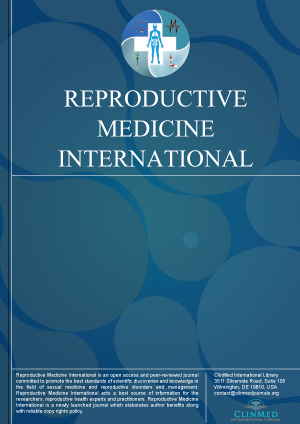Early Online
Open Access DOI:10.23937/2643-4555/1710026
Prevalence of Endometriosis in Sub-Fertile Women Confirmed at Laparoscopy: A Retrospective Analysis
Swati Sharma, Shilpa Deb, Taqwa Ferdous, Fatema Abusin, Ishan Wijewardana
Article Type: ORIGINAL RESEARCH | Indexed Archive: Volume 7
Article Formats
- Full Article
- XML
- EPub Reader
Open Access DOI:10.23937/2643-4555/1710025
Daouda Kanté, Alexandre Vahina Gamamou, Lahoumbo Ricardo Gnammi, Aboubacar Cherif, Abdoulaye Bobo Diallo and Telly SY
Article Type: Original Article | Indexed Archive: Volume 7
Article Formats
- Full Article
- XML
- EPub Reader
Open Access DOI:10.23937/2643-4555/1710024
Hysterosalpingograms of Tubal Structures in Infertile Women from Western Sudan
Salah El din Gumaa and Hussain Gadelkarim Ahmed
Article Type: Research Article | Indexed Archive: Volume 7
Article Formats
- Full Article
- XML
- EPub Reader
Open Access DOI:10.23937/2643-4555/1710023
Different of Hypothalamic-Pituitary-Gonadal Axis in Male and Female
Iin Fadhilah Utami Tammasse and Fachrul Tamrin
Article Type: Review Article | Indexed Archive: Volume 6
Article Formats
- Full Article
- XML
- EPub Reader

Volume 6
Issue 1
Issue 1
